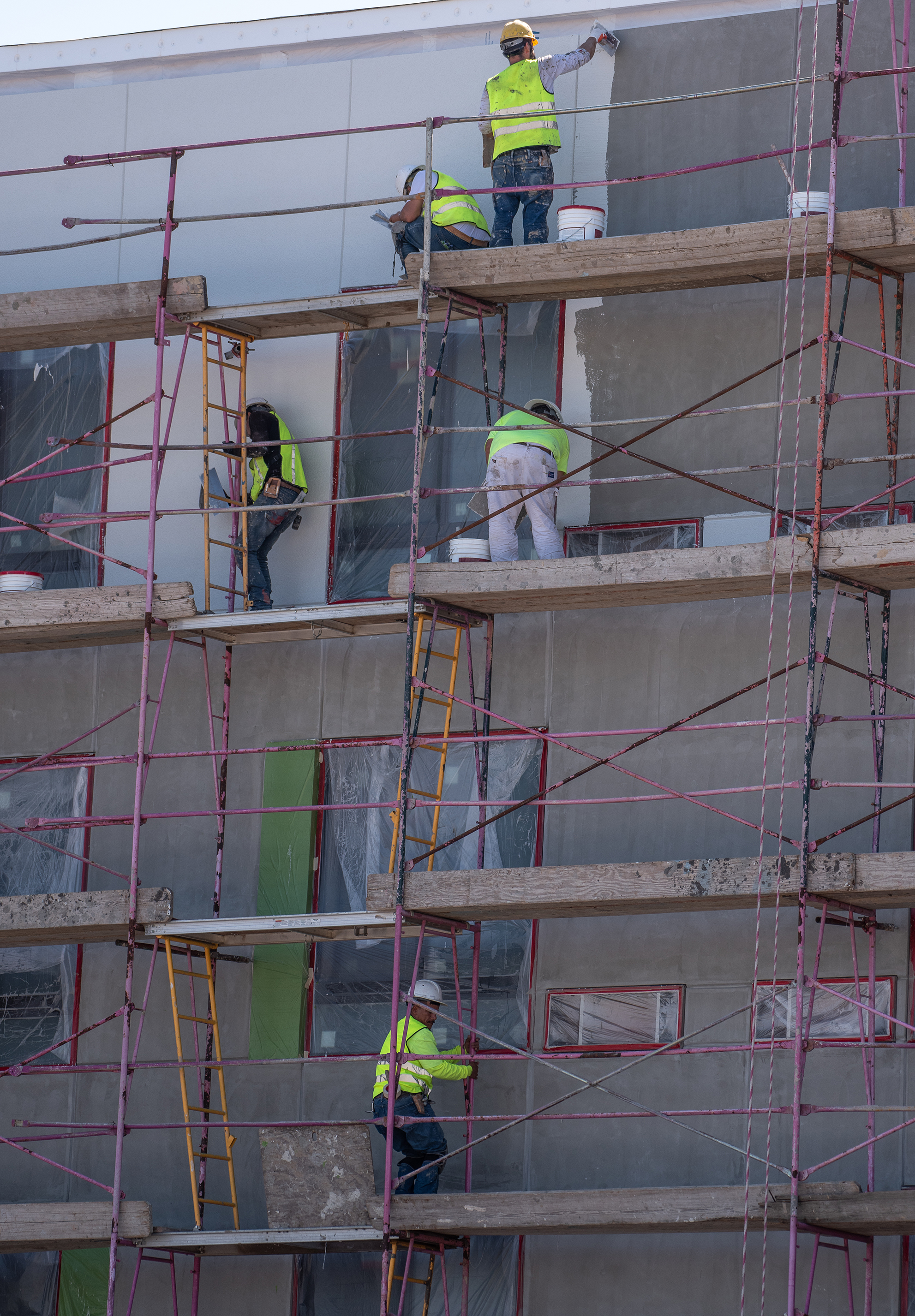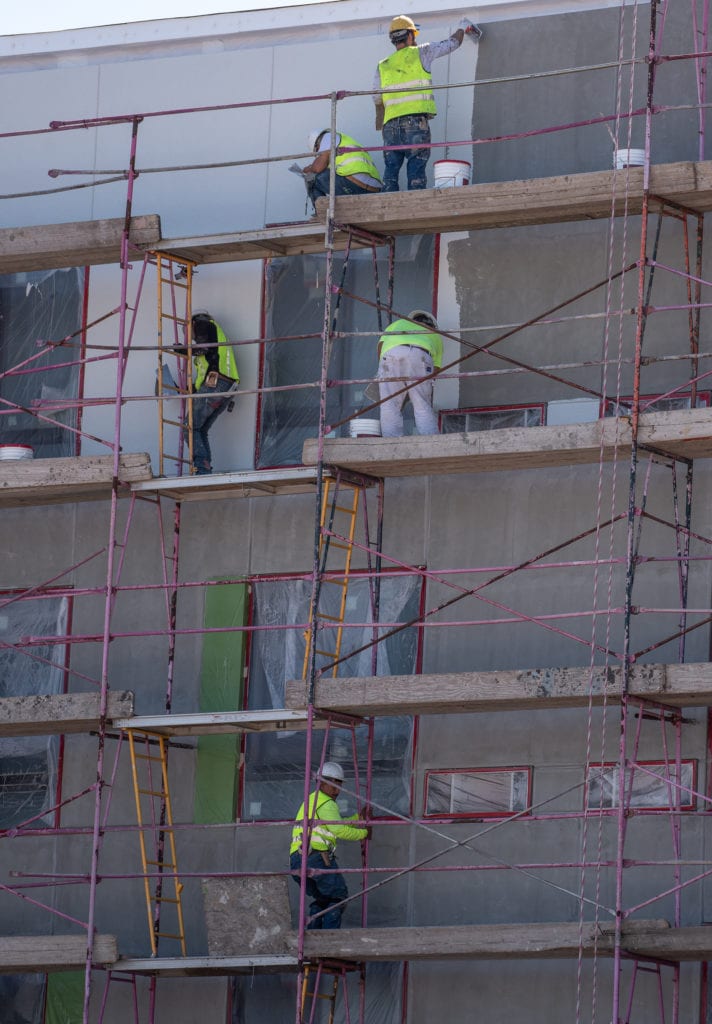
Home » Commercial real estate: Costs continue to drive up prices
Commercial real estate: Costs continue to drive up prices

October 15, 2019
Commercial real estate agents cite years of ongoing growth for the Tri-Cities’ especially tight market today.
“There’s a lot of leasing, a lot of sales, a lot of new construction going on,” said Rob Ellsworth, senior advisor at SVN | Retter & Co. in Kennewick. “Our market might even be too strong right now because every contractor is filled up. Contractors are selling buildings now that they’re going to put up in 2020. They’re not usually booking this many out.”
That’s led to an expected effect of higher prices for new builds.
“Everybody I’ve talked to says, ‘Man, prices are really high.’ And that’s not a negative against our contractors, that’s a function of the market,” Ellsworth said. “There’s so much demand for construction work, contractors can and need to charge more because they’re paying overtime to finish these projects.”
In a report produced by Nikki Griffith, owner of Appraisal Group SEWA in Kennewick, she projected 2.9 million square feet of new construction from 2018-19 across all real estate sectors in Benton and Franklin counties, with about 8 percent, or 230,000 square feet, in new office space. Another 8 percent was forecast for retail sites.
From 2014-19, the average square footage of new construction added to the market yearly was about 1.3 million, with most in Benton County. During the five-year period, a total of 6.4 million square feet was added across all real estate sectors. Office and retail space each made up about 8 percent of that total, respectively, creating about three-quarters of a million in new square footage during that period.
“I think a lot is internal, smaller, local businesses growing,” said Charles Laird, a licensed real estate broker for Tippett Co. in Pasco who focuses on commercial properties. “And the residential growth is kind of a twofold deal where you’ve got industry growing, the need for jobs. More houses come in and that creates a need for more office, retail and industrial.”
Commercial construction includes office space or storefronts, but also road and other public works projects. These projects increased in 2019 despite an extreme winter—but also likely because the extreme winter damaged infrastructure.
Scott Howard, executive director of the Tri-City Construction Council, estimates the number of projects posted to the agency’s virtual plan room to reach 290 in Benton County and 100 in Franklin County in 2019, based on the current pace.
Described as “an informational hub for actively bidding projects,” the council’s plan room allows subcontractors, suppliers, general contractors and even the occasional architect or engineer to see what projects are available to bid on.
“We scour the newspapers. We track things online, looking for the latest bids,” so those in the industry have an idea of what’s out there if they want to find available work, Howard said.
The number of projects posted to the construction council’s virtual plan room has trended upward since 2017 for Benton County. For Franklin County, there was a dip between 2017-18, but 2019’s totals already far outpace 2018’s 63.
As contractors stretch to meet demand for commercial space, agents also are seeing “record” rates for leasing property in the new buildings.
Kirt Shaffer, a licensed real estate broker for Tippett Co. who focuses on commercial properties, said he’s spied rates of up to $25-a-square-foot for class A space, considered the most desirable. A few years ago, Shaffer said rates weren’t above $20-a-square-foot.

Lease rates for class B and C properties also have increased an average of $12- to $16-a-square-foot and $8- to $12-a-square-foot.
“Cost of land, construction and cost of development is driving up the prices,” Laird said.
These rates don’t include the triple nets, or NNN, which is a square footage rate that includes real estate taxes, insurance and upkeep.
“There’s just a confidence in the economy right now. Who knows what it will look like in a couple years after an election cycle,” Laird said.
In a 2019 report from the National Association of Realtors, prices for commercial real estate were forecast to steadily climb nationwide, though at a more “modest pace” than what’s been seen recently. The same report predicted continued growth in the industrial sector, a field that brokers say has been booming around Oregon Avenue in Pasco, where properties have filled in around an area known as Frey’s Addition.
“If you look at an old plat, the city had platted out lots of road and that’s not how it ultimately has developed out. There’s a lot of rights of way throughout all that ground that guys have been getting the city to vacate to create larger tax lots to build industrial buildings on,” Laird said. Much of the development is light industrial and manufacturing, as owners seek to secure land for a location, or expand, often by consolidating other properties.
The demand exists for industrial land in north Richland near Horn Rapids.
“If people want to build the buildings, there’s people who want to rent them,” said Mandy Wallner, marketing specialist for economic development in the city of Richland.
Kennewick has had less industrial land available.
“There’s been a little pick up in sales because interest rates have gone down, so it’s caused capitalization rates to cause building values to go down, but it also allows an increase in what buyers can finance,” Ellsworth said.
Compared to larger cities in the region, the Tri-Cities has remained desirable for its cost of living and quality of life. Ellsworth said in the nearly 10 years he’s focused on commercial real estate, he’s seen a growing interest from buyers outside the market—and even outside the country.
“I’ve seen a lot of buyers from outside the area have interest in leased properties in this market because they see the value we have, versus a Seattle or Portland or Spokane,” he said.
Those in the industry point to continued population growth bolstering the desire for more commercial properties.
“I think when we get the 2020 census, people are going to be shocked at how many people are actually in the Tri-Cities,” Ellsworth said. “All those people either live here or come here for their shopping and medical services and all of those things are continuing to create a snowball effect.”
Laird said national retailers tend to be specific about desired demographics and population before setting up shop in a community.
When the Tri-Cities officially hits the 300,000 population mark, it could open up new interest from retailers not yet seen locally.
“Food processing, agriculture and medical are all growing really strong, so those pull other things in, like retail and financial services, and makes those sectors stronger,” Ellsworth said.
Brokers described some “sub-markets” in the Tri-Cities that are a hotbed for current and future growth. Laird and Shaffer believe these include Road 68 in Pasco, Queensgate Drive and Badger Mountain South, both in Richland.
“They’re all kind of competing with each other, even though it’s not a huge distance apart. They’ll all be driven by the residential growth. Big box started and smaller ones piggybacked on. If the rooftops continue to show up, you’ll see additional demand for neighborhood strip malls,” Laird said.
Ellsworth thinks the area between Belmont Boulevard and Van Giesen Street in West Richland could take off, as well as property along the Bob Olson Parkway in Kennewick.
“We see a lot of residential growth near Southridge that’s going to lead to more commercial activity. That’s an area that’s really been untapped, and I think the Bob Olson Parkway is underused. I think as more people see it and understand it and use it, it’s going to become a major thoroughfare,” Ellsworth said.
Experts agreed there is plenty of new construction still ahead for the foreseeable future, even with a market that’s been squeezed for a couple years.
“If our market slowed down just a touch, it might bring it to a more balanced market than it is now,” Ellsworth said.
Construction + Real Estate
KEYWORDS october 2019





